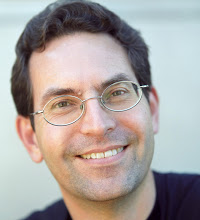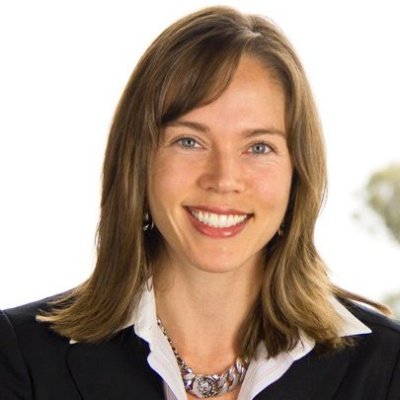 As we begin 2017, what should be the focus of our work over the next year?... Regardless of the policies, repeals, and delays of the Trump administration, we’ll still need to optimize usability and support the four goals of value-based purchasing - quality measurement, total medical expense management, practice process improvement and technology adoption. BIDMC has already created a prototype of groupware documentation and we should complete our next generation inpatient documentation solution by mid 2017. Part of that work incorporates open source secure texting as part of the medical record. We’re also piloting Google’s G-suite so that our stakeholders can store/share, collaborate, and communicate on any device from anywhere using only a browser...
As we begin 2017, what should be the focus of our work over the next year?... Regardless of the policies, repeals, and delays of the Trump administration, we’ll still need to optimize usability and support the four goals of value-based purchasing - quality measurement, total medical expense management, practice process improvement and technology adoption. BIDMC has already created a prototype of groupware documentation and we should complete our next generation inpatient documentation solution by mid 2017. Part of that work incorporates open source secure texting as part of the medical record. We’re also piloting Google’s G-suite so that our stakeholders can store/share, collaborate, and communicate on any device from anywhere using only a browser...
Beth Israel Deaconess Medical Center (BIDMC)
See the following -
Halamka Sets Healthcare Innovation Priorities for 2017
- Login to post comments
Halamka Talks About Embracing Innovation in Healthcare IT
 I’ve written several posts over the past two years about the need for innovation in healthcare IT - deploying self-developed apps, leveraging third party cloud hosted functions, and embracing the internet of things. I’ve previously discussed establishing a center for innovation. In preparation, I’ve worked on innovative projects in industry accelerators, academic collaborations, and government sponsored hack-a-thons. What has worked?...
I’ve written several posts over the past two years about the need for innovation in healthcare IT - deploying self-developed apps, leveraging third party cloud hosted functions, and embracing the internet of things. I’ve previously discussed establishing a center for innovation. In preparation, I’ve worked on innovative projects in industry accelerators, academic collaborations, and government sponsored hack-a-thons. What has worked?...
- Login to post comments
Halamka's 2016 Predictions for Health IT
 As the year ends and we archive the accomplishments and challenges of 2015, it’s time to think about the year ahead. Will innovative products and services be social, mobile, analytics, and cloud (SMAC)? Will wearables take off? Will clinicians be replaced by Watson? Here are my predictions...Apps will layer on top of transactional systems empowered by FHIR...a better approach is crowdsourcing among clinicians that will result in value-added apps that connect to underlying EHRs via the protocols suggested in the Argonaut Project (FHIR/OAuth/REST). One of our clinicians has already authored a vendor neutral DICOM viewer for images, a patient controlled telehealth app for connecting home devices, and a secure clinical photography upload that bypasses the iPhone camera roll. That’s the future.
As the year ends and we archive the accomplishments and challenges of 2015, it’s time to think about the year ahead. Will innovative products and services be social, mobile, analytics, and cloud (SMAC)? Will wearables take off? Will clinicians be replaced by Watson? Here are my predictions...Apps will layer on top of transactional systems empowered by FHIR...a better approach is crowdsourcing among clinicians that will result in value-added apps that connect to underlying EHRs via the protocols suggested in the Argonaut Project (FHIR/OAuth/REST). One of our clinicians has already authored a vendor neutral DICOM viewer for images, a patient controlled telehealth app for connecting home devices, and a secure clinical photography upload that bypasses the iPhone camera roll. That’s the future.
- Login to post comments
Halamka's Cautionary Tale for Healthcare
 During my CIO career, I’ve worked on a few Harvard Business School case studies and I’ve had the “joy” of presenting my failures to Harvard Business school students for over a decade. I enjoy telling stories and inevitably the cases I teach are about turning lemons into lemonade. In this post, I’d like to tell a story about a recent experience with Marvin Windows and lessons learned that apply to healthcare...
During my CIO career, I’ve worked on a few Harvard Business School case studies and I’ve had the “joy” of presenting my failures to Harvard Business school students for over a decade. I enjoy telling stories and inevitably the cases I teach are about turning lemons into lemonade. In this post, I’d like to tell a story about a recent experience with Marvin Windows and lessons learned that apply to healthcare...
- Login to post comments
Halamka's Health IT Forecast in a "Time of Uncertainty"
 The upcoming presidential election has everyone spooked - what if Donald Trump is actually elected? What will the transition of administrations, regardless of who is elected mean to healthcare and existing healthcare IT regulations? Will our strategic plans and priorities need to change? I’ve spoken to many people in government, industry and academia over the past month about the rapid pace of change stakeholders are feeling right now. Here are a few of their observations:
The upcoming presidential election has everyone spooked - what if Donald Trump is actually elected? What will the transition of administrations, regardless of who is elected mean to healthcare and existing healthcare IT regulations? Will our strategic plans and priorities need to change? I’ve spoken to many people in government, industry and academia over the past month about the rapid pace of change stakeholders are feeling right now. Here are a few of their observations:
- Login to post comments
Halamka's Recommendations for Effective Care Management
 I recently joined the advisory board of Arcadia Healthcare Solutions, a leading provider of analytics, decision support, and workflow enhancement services. At my first advisory board meeting there was a rich debate about the marketplace for care management and population health tools. I’ve spent years studying such solutions at HIMSS and found most of the products are “compiled in Powerpoint”, which is a very agile programming language, since it’s so easy to change…
I recently joined the advisory board of Arcadia Healthcare Solutions, a leading provider of analytics, decision support, and workflow enhancement services. At my first advisory board meeting there was a rich debate about the marketplace for care management and population health tools. I’ve spent years studying such solutions at HIMSS and found most of the products are “compiled in Powerpoint”, which is a very agile programming language, since it’s so easy to change…
- Login to post comments
HL7 Launches Joint Argonaut Project to Advance FHIR
Leading Health IT industry vendors and providers collaborate with HL7 to accelerate development and adoption of FHIR Read More »
- Login to post comments
How to Get Patients to Take More Control of Their Medical Decisions
For years, people have been urged be more active in their own care. Now providers are giving them better tools to make that happen. They’re told they need to do more to monitor their chronic conditions. They are directed to be more active in deciding what treatments to have, or whether to treat a condition at all. That has proved easier said than done. For some people, it’s a matter of feeling intimidated: Better to let the doctors decide. Some are overwhelmed by the choices they have to make about their care, which seem to get more complex every year. At the same time, many doctors are reluctant to change old ways of working...
- Login to post comments
Is EHR data blocking really as bad as ONC claims?
 Consensus that EHR vendors and profit-hungry hospitals are intentionally making it hard for patients and others to access date is based on evidence – much of it put forth by the Office of the National Coordinator for Health IT – that is largely anecdotal. Center for Medical Interoperability vice president Kerry McDermott says data blocking is a systemic issue because information sharing is a new practice in healthcare...
Consensus that EHR vendors and profit-hungry hospitals are intentionally making it hard for patients and others to access date is based on evidence – much of it put forth by the Office of the National Coordinator for Health IT – that is largely anecdotal. Center for Medical Interoperability vice president Kerry McDermott says data blocking is a systemic issue because information sharing is a new practice in healthcare...
- Login to post comments
John Halamka Uses Big Data Analytics In Healthcare To Fight Wife's Cancer
 When John Halamka, M.D., CIO of Beth Israel Deaconess Medical Center in Boston, and his wife, Kathy, found out she had stage 3 breast cancer in 2011, they turned to big data analytics in healthcare to find the best treatment plan. Fortunately for Halamka and his wife, the Boston area is home to 17 Harvard-University-affiliated hospitals, including Beth Israel, that have opened their data for queries via a free open source, Web-based application called i2b2. Any medical record system in the country can connect to i2b2's database and EHR, Halamka said.
When John Halamka, M.D., CIO of Beth Israel Deaconess Medical Center in Boston, and his wife, Kathy, found out she had stage 3 breast cancer in 2011, they turned to big data analytics in healthcare to find the best treatment plan. Fortunately for Halamka and his wife, the Boston area is home to 17 Harvard-University-affiliated hospitals, including Beth Israel, that have opened their data for queries via a free open source, Web-based application called i2b2. Any medical record system in the country can connect to i2b2's database and EHR, Halamka said.
- Login to post comments
Logging On For Life
Digital access to medical records empowers patients through better communication, smarter decisions, and continuous health tracking online. Read More »
- Login to post comments
On the Lack of Cyber Security of Medical Devices
 Two weeks ago the U.S. Food and Drug Administration advised hospitals not to use Hospira's Symbiq infusion system, concluding that a security vulnerability enables hackers to take remote control of the system. The agency issued the advisory some 10 days after the U.S. Department of Homeland Security warned of the vulnerability in the pump. My view is that this will be the first of many advisories. For years, manufacturers of medical devices depended on the “kindness of strangers” assuming that devices would never be targeted by bad actors. EKG machines, IV pumps, and radiology workstations are all computers, often running un-patched old operating systems, ancient Java virtual machines, and old web servers that no one should currently have deployed in production.
Two weeks ago the U.S. Food and Drug Administration advised hospitals not to use Hospira's Symbiq infusion system, concluding that a security vulnerability enables hackers to take remote control of the system. The agency issued the advisory some 10 days after the U.S. Department of Homeland Security warned of the vulnerability in the pump. My view is that this will be the first of many advisories. For years, manufacturers of medical devices depended on the “kindness of strangers” assuming that devices would never be targeted by bad actors. EKG machines, IV pumps, and radiology workstations are all computers, often running un-patched old operating systems, ancient Java virtual machines, and old web servers that no one should currently have deployed in production.
- Login to post comments
Open EHR Notes Pilot Expands After Positive Patient Response
After a pilot program that offered thousands of patients access to their EHR notes exceeded expectations in patient and physician satisfaction, Beth Israel Deaconess Medical Center in New York and Geisinger Health System of Pennsylvania are widening the net. [...] Read More »
- Login to post comments
Real Time Big Data Analytics for Clinical Care
Recently, Dr. Chris Longhurst, chief medical information officer at Lucile Packard Children's Hospital, and colleagues wrote an article in the Big Data Issue of Health Affairs, that suggests a very practical approach for enabling real time analytics within an EHR. They call it the Green Button.
- Login to post comments
Researchers at Beth Israel Deaconess Examine the Impact of OpenNotes on Patient Safety
 Researchers from Beth Israel Deaconess Medical Center (BIDMC) are homing in on the potential benefits of allowing patients access to the notes their clinicians write after a visit. An article published in the August edition of The Joint Commission Journal on Quality and Patient Safety suggests that this kind of patient engagement has the power to improve safety and quality of care. The practice of sharing visit notes more readily began with the OpenNotes study in 2010. More than 100 primary care doctors at three hospitals invited 20,000 of their patients to read their visit notes through a secure, patient website.
Researchers from Beth Israel Deaconess Medical Center (BIDMC) are homing in on the potential benefits of allowing patients access to the notes their clinicians write after a visit. An article published in the August edition of The Joint Commission Journal on Quality and Patient Safety suggests that this kind of patient engagement has the power to improve safety and quality of care. The practice of sharing visit notes more readily began with the OpenNotes study in 2010. More than 100 primary care doctors at three hospitals invited 20,000 of their patients to read their visit notes through a secure, patient website.
- Login to post comments